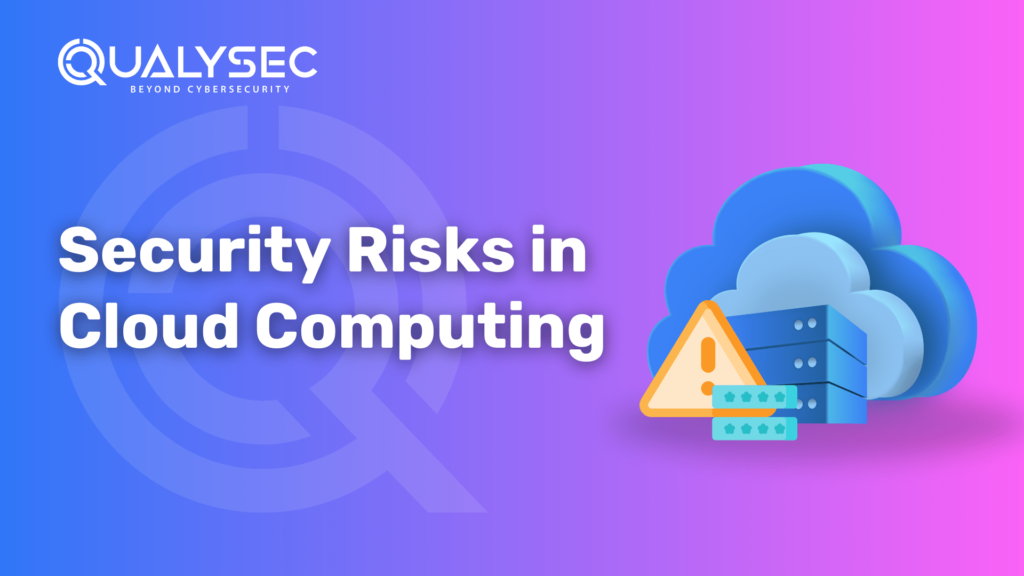What is Cloud Security Vulnerability?
Cloud computing has transformed businesses in terms of retrieving, storing, and managing data. Cloud security vulnerability is one of the major concerns in cloud computing as it describes the cloud environment’s weakness and is exploited by attackers. Businesses need to understand these vulnerabilities as they can damage a business’s data, apps and infrastructure. Qualysec Technologies is here to evaluate the cloud security vulnerabilities, the possible causes, different types of Cloud Security VAPT, and how businesses can be safe from them. Understanding Cloud Security VAPT & Vulnerability Cloud security vulnerability is the weakness in cloud environments that a hacker can exploit to intrude into his target’s cloud space, steal data, or adversely disrupt services. However, these vulnerabilities exist because of misconfiguration, weak access control, unpatched software, insecure API, or even insider threats. Risks common to this include data breaches, identity theft, denial-of-service attacks, and so on. Therefore, businesses need to protect data by enforcing strong Cloud Security VAPT and making it encrypted, monitoring security regularly and providing compliance with industry standards are the ways to mitigate these threats. Since the adoption of the cloud is growing, organizations need to be proactive in the area of strengthening the security posture for critical information while ensuring the continuity of doing business in the fast-moving cyber threat landscape. Causes of Cloud Security Vulnerabilities The concept of cloud computing has come a long way, which means that it has made the implementation of business processes much easier. That is where this becomes interesting because as cloud adoption grows more, that also increases the security risks. There are many factors in Cloud Security VAPT such as misconfiguration and highly sophisticated cyber threats. To secure the cloud environments of an organisation, it is important to understand these causes. Misconfigurations Misconfiguration is one of the most common reasons for cloud security vulnerability. Cloud resources are left open to attacks as organizations set up their cloud resources poorly and fail to secure them. Some common misconfigurations include: Unauthorized access, the leaking of data, and even full system compromise can occur through misconfigurations. Weak Authentication and Access Controls This however is a big load in cloud environments where IAM is a much more important enforcing force. When the user is authenticating using weak methods, it turns out that unauthorized users can gain access to sensitive resources. Some major issues include: In other words – using weak or reused passwords. However, cloud systems are subject to infiltration by cyber criminals without strong authentication and adequate access control policies. Insider Threats Some employees, contractors and third-party vendors can be a big security risk. The threats may be malicious (intentional insider threats) or negligence (unintentional insider threats). Common insider threats include: To mitigate insider threats, organizations are required to implement strict access control measures and monitor the activity of the users. “Check out our recent articles on Cloud Security Testing and Cloud Penetration testing to gain deeper insights into securing cloud environments.” Unpatched Vulnerabilities and Outdated Software Security patches and updates are being released by the cloud provider. But, to leave a vulnerability un-updated can be dangerous by exposing applications in the cloud, operating system and security software. For cybercriminals, it is often using known vulnerabilities of outdated software that: Insecure APIs and Interfaces Between cloud services and applications, there are Application Programming Interfaces (APIs) and management interfaces for communication. But insecure APIs can bring major security risks such as: These weaknesses can be exploited by attackers to unlawfully obtain access to other’s data, data manipulation, or attack cloud resources. Data Loss and Leakage Security of the data is an issue of significant importance in cloud computing. Data loss or leakage can be caused by any of the following depending on the situation. To keep the data from being leaked or lost, encryption, backups regularly and rigorously enforced rules and policies on what people can and can’t do are also essential. Denial-of-Service (DoS) Attacks Denial-of-Service (DoS) and Distributed Denial-of-Service (DDoS) attacks are the usual targets for Cloud environments. Cloud servers get overwhelmed with excessive amounts of traffic in these attacks and one of the results is: DDoS protection services are also offered by cloud providers, but organizations also need to implement rate limiting and traffic filtering to manage risks. Compliance and Regulatory Risks One of the security vulnerabilities for a company to have is failure to comply with industry regulations (i.e. GDPR, HIPAA, PCI DSS). Non-compliance issues include: At the same time, all organizations are required to align their Cloud Security VAPT practices with the requirements of the regulations. “Also explore: Top Cloud Computing Vulnerabilities & How to Address Them?“ Types of Cloud Security Vulnerabilities Cloud security vulnerabilities are vulnerabilities in the cloud environments that can be exploited by cybercriminals to gain access to data, applications and the cloud infrastructure. These vulnerabilities come from misconfiguration lack of security controls, and the evolution of cyber threats. However, these are the major types of Cloud Security VAPT. Data Security Vulnerabilities Cloud computing is one of utmost concern in terms of data security. Breaches, loss and unauthorized access are the consequences when it comes to vulnerabilities in data security. Mitigation: Identity and Access Management (IAM) Vulnerabilities Identity and access management (IAM) errors in the cloud expose such environments to unauthorized access and privilege escalation attacks. Mitigation: Infrastructure Vulnerabilities Cloud infrastructure, Virtual Machines (VMs) containers, and storage services contain misconfigurations and security threats. Mitigation: “Related content: A Guide to Infrastructure Security in Cloud Computing“ API and Application Security Vulnerabilities Cyber attacks target frequent cloud-based applications and APIs. It can also result in data exposure and service disruptions if weak security is present in the APIs. Mitigation: Compliance and Legal Vulnerabilities Not complying with regulatory requirements is liable to get you legally and historically fired. Mitigation: How Qualysec Technologies Can Help Penetration testing, vulnerability checking and security consultancy services are some of the services Qualysec Technologies offers for businesses to detect, fix, and deal with security threats. They work with clientele in the financial, healthcare, e-commerce,



